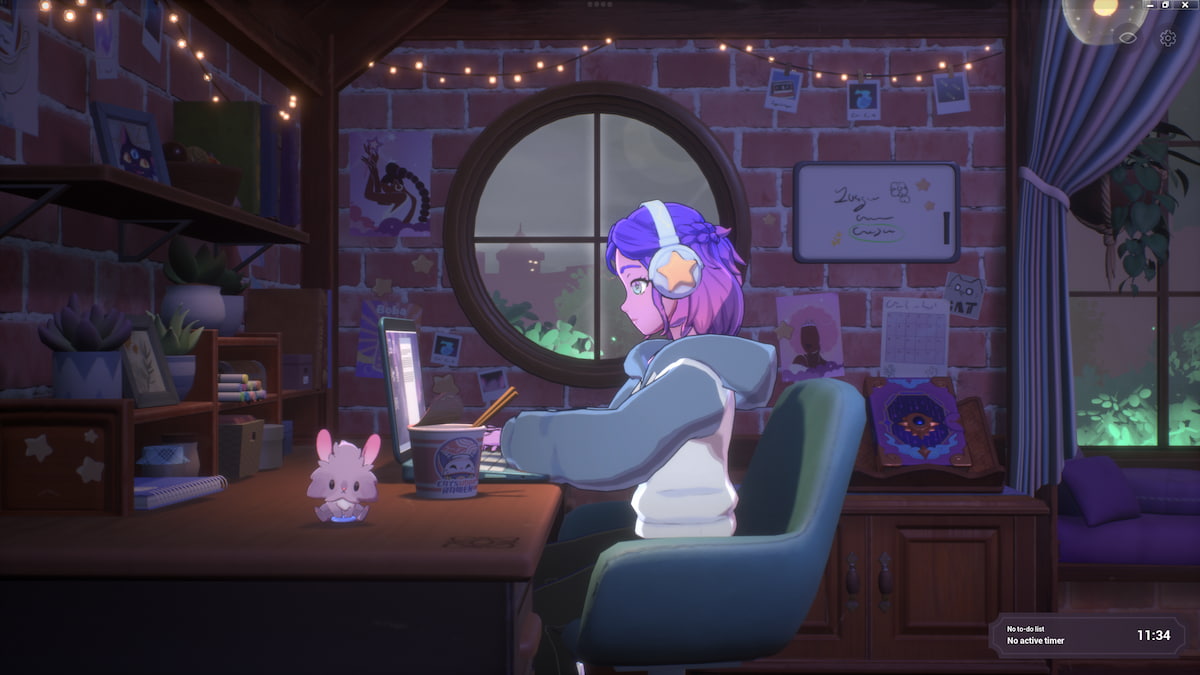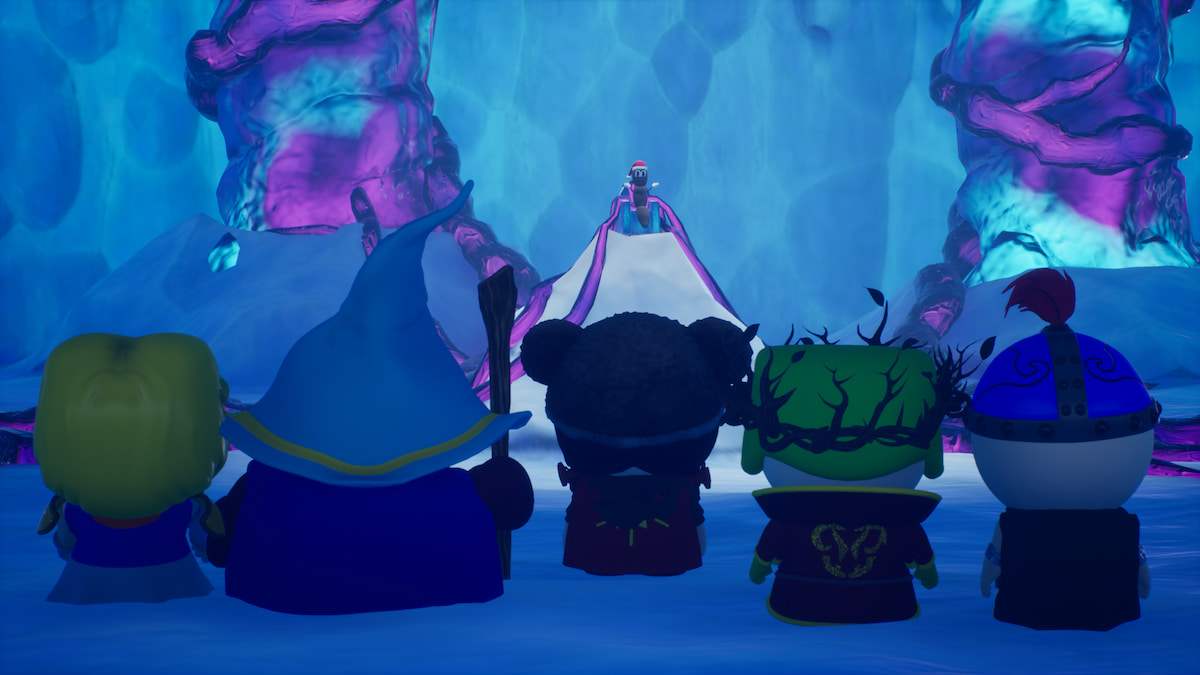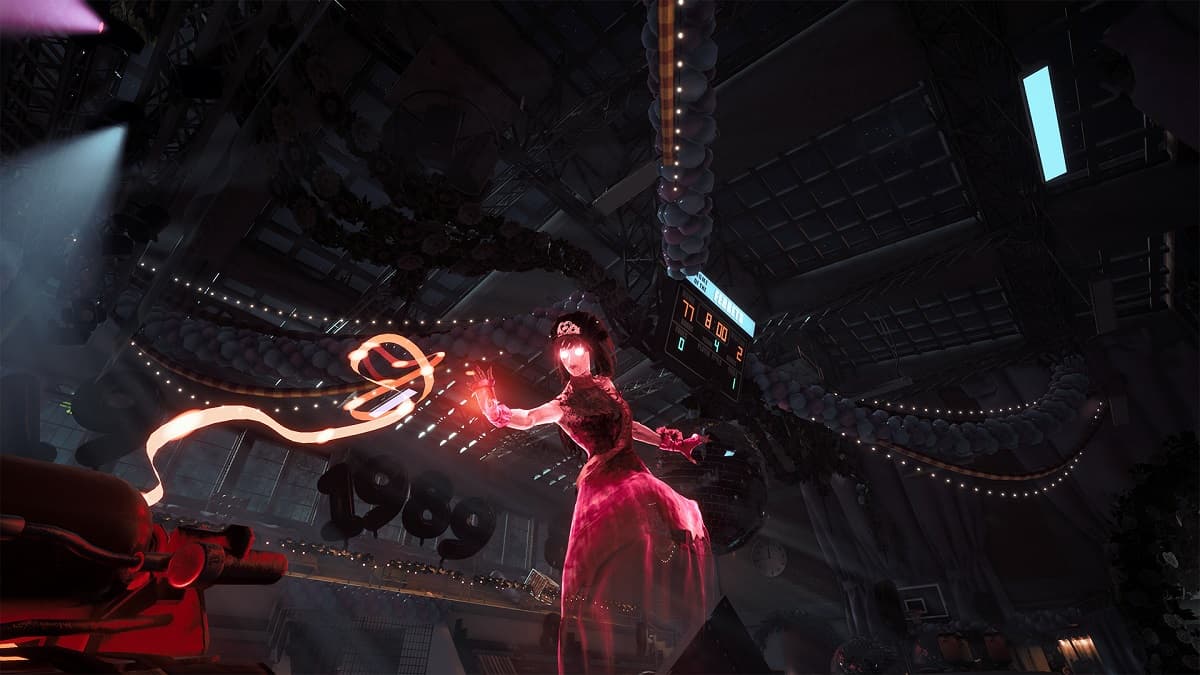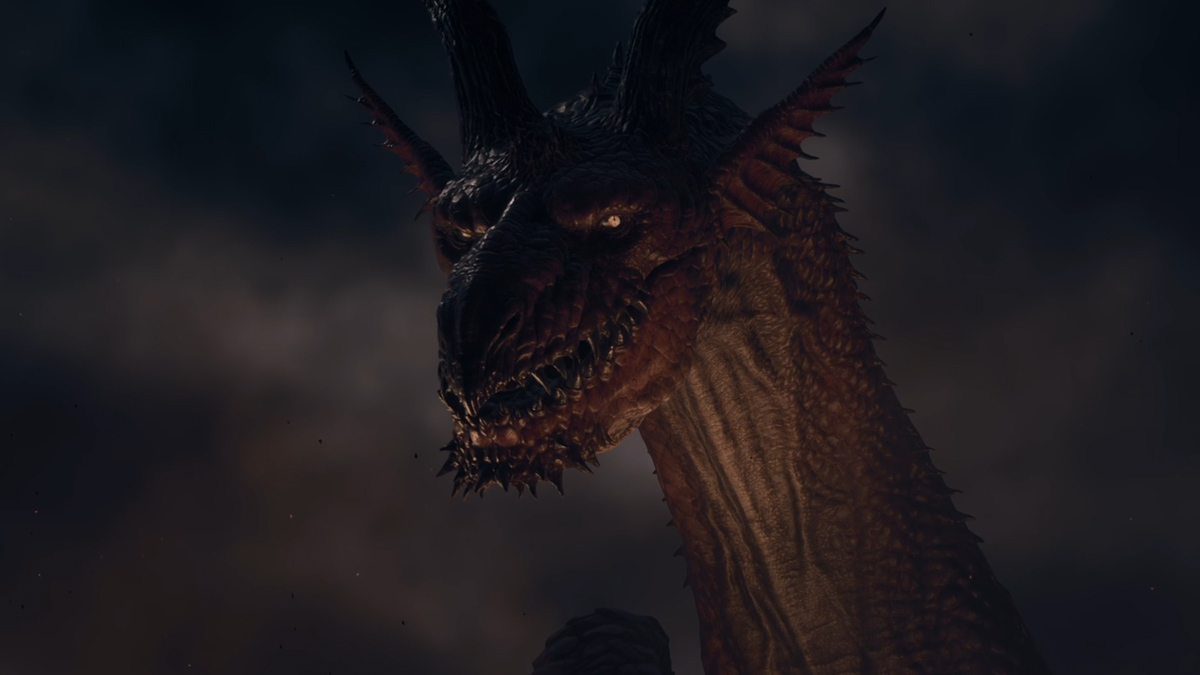For some time now, the video game industry has been playing a game of their own. Some of us have played as well back in kindergarten. Remember follow the leader?
The rules, however, are slightly different in this scenario. Whenever a developer has a good idea, another batch of developers jumps on the bandwagon to profit from it. It happened when DayZ proved that gamers were interested in the survival aspect of the Zombie Apocalypse, and it happened again when Dishonored showed how there was still a market in first person stealth games. It is true that Thief was in development since 2009, but it is obvious that both Dishonored and Thief took inspiration from each other.
This, however, is not always a bad thing. Despite all the cheap copies of successful titles that come from this, it also spawns some new and interesting titles from time to time, with their own take on the game type. The Thief reboot is by no means trying to appeal to the Dishonored fanbase, neither was Dishonored attempting to appeal to the Thief fanbase. The reboot deviates slightly from its roots, but remains its own game.
Gameplay
The Good: Immersive, not entirely streamlined, relatively enjoyable and challenging.
Thief is a game with a focus on stealth and stealing valuable loot. It follows the character Garret, a Master Thief, on several of his heists in The City. It offers very good stealth gameplay as well as some features not seen in other stealth games. Feeling around a painting to find a hidden switch, or examining a bookcase to pull one specific book and trigger a secret passage have been a first for me. It isn’t a feature that seriously affects gameplay, but it immersed me in the world and provided something new.
As seen in the previous titles, Garret is a thief, not a murderer; although he walks about with a bow and a quiver full of arrows, his trademark weapon is the Blackjack, with which he knocks guards out when he has to. The bow itself is mostly used to shoot rope arrows so he may climb onto rooftops, or water arrows so that he can put out torches and make sneaking about easier. The way the game plays is up to the gamer–Thief adapts to one of the three playstyles: Ghost, Opportunist and Predator. Each playstyle offers a challenge that may be completed in each of the levels, rewarding the player with extra gold if they succeed.
Although not as unforgiving as its predecessors when it comes to difficulty, Thief can still be a somewhat challenging game. It comes with the standard three difficulty settings (let’s call them normal easy and hard), as well as the possibility to customize the difficulty you want to play in. The challenge, though, doesn’t come from the game itself being hard, but from limitations the player decides to impose on himself/herself by aiming to complete one of the three playstyles mentioned above.
The game never really explains how to aim for any of the three, and the player has to do some digging around online to learn what playstyle they are aiming for based on how they play the game. It is the first mistake that the game makes as it doesn’t state the rules one has to follow to achieve a specific style.
Playing the game as a Ghost involves not interacting with the environment in any way, and leaving no trace that you were ever there (besides all the missing valuables).
The Ghost playstyle is perhaps the most challenging to perform but the most rewarding as well. The challenge in a Ghost playstyle is always the same for each level: Don’t get caught. Playing the game as a Ghost involves not interacting with the environment in any way, and leaving no trace that you were ever there (besides all the missing valuables). This means that you may not alert guards with distractions, you may not put out torches, you may not disarm traps. It is a playstyle based on player-made challenges from the older Thief games that one may find in the Eidos forums, and I was pleasantly surprised to see them implemented in this way on the reboot.
This is the playstyle I aimed for, but the limitations imposed on the player by some of the gameplay decisions made by the developers made playing the game as a Ghost also very frustrating. It is clearly obvious that not every level has a Ghosting path, which influenced the difficulty of a Ghost playthrough. Missions 2, 3 and 4 all end with Garret having a face to face with the Thief-Taker General (especially mission 4 which involves a room with 5 guards actively searching for you.) it felt like your attempts at Ghosting weren’t really worth the trouble, since your presence was noticed by a character in a cutscene even if it had no impact on the actual gameplay.
Achieving an Opportunist playstyle in any level is very easy, since all one has to do is put out candles and torches, disarm traps and distract guards.
The Opportunist is like the Ghost in some aspects. He is also stealthy, but he will interact with the environment to achieve his goal. Achieving an Opportunist playstyle in any level is very easy, since all one has to do is put out candles and torches, disarm traps and distract guards. This makes it the easiest playstyle to achieve, since if you get caught you aren’t really penalized for it and first timers are encouraged to interact with the environment. One should still aim to avoid harming guards and to remain stealthy though, since that falls into the portfolio of the next playstyle.
A predator remains in the shadows and strikes when the opportunity presents itself.
The Predator should be self explanatory. One does not have to completely disregard stealth, since performing nonlethal takedowns with your blackjack will still count towards this playstyle. A predator remains in the shadows and strikes when the opportunity presents itself. It is still encouraged to be stealthy as a Predator since combat in Thief was designed to benefit the enemy rather than the player. A very skilled gamer can still go through the entire game through direct combat, but because of the purposely awkward nature of combat in Thief a player that aims for a Predator playstyle will naturally prefer to not get caught, but will actively stalk every guardsman in the level.

Focus lights up the darkness, points out objects of interest and provides clues to some of the game’s puzzles. The drawback is that some secrets aren’t really secret anymore.
Due to an event at the start of the game, Garret finds himself more capable when he focuses. The Focus mechanic is new to the Thief franchise and can be used to make the game slightly easier by highlighting traps and objects, as well as with the right upgrades allowing the player to look at the inner workings of a lock to open it quicker, for example.
This is where all of the money you collect in the game comes into play. The game has implemented an upgrade system in the form of three different types of upgrades: The Focus upgrades come from donating money to the Queen of the Beggars, while Tool upgrades and Trinkets come from the black market. Some are more significant than others, with some upgrades being entirely unnecessary depending on the playstyle you are aiming for. Why would you upgrade the damage your blackjack does if you’re trying to avoid direct combat? Why upgrade focus to come into play in combat if you’re intent on not even getting close to guards? The option is there for players who wish for a more aggressive experience, but with the combat having been built around discouraging the player from engaging in it actively, it makes these upgrades sound counter-intuitive.
The AI in Thief was a treat to observe. Guardsmen engage in conversations with each other, some of which may reveal information about the level that is worth listening to. When a guard is patrolling an area, if they notice a cupboard is open when it was previously closed, they will immediately be alerted to the presence of someone in the area and will begin to search for the intruder. These are little things that are usually overlooked in stealth games and made the game slightly more difficult to go through in a full stealth playthrough (Ghost).
Guardsmen aren’t entirely blind either. There are different levels of illumination in Thief, even in complete darkness, a Guardsman walking close enough to Garret might be able to see him through his peripheral vision. However, the game overlooks a couple of details as well. Guards will notice open cupboards, but not when a painting has been moved to reveal a safe underneath, even if the safe remains closed. With no real way to put paintings back in place, it is rather obvious why they would not be alerted to this, but it was just a tiny detail that irked me.
In addition to the human Guardsmen, there are also other creatures Garret has to worry about. Besides the Freaks in some of its levels, which I won’t go into a lot of detail with, there are animals like birds and dogs that react when Garret is near. Alert these animals and the Guards will be inclined to investigate.
The Hub, however, is also a source of frustration as it is where Thief’s shortcomings are noticed the most.
Besides providing several missions, Thief also has a city ‘Hub’ like Deus Ex: Human Revolution. In-between missions Garret has the possibility to explore the City and engage in side-quests for his fence, or simply breaking into homes and stealing valuables for the sake of satisfying the player’s greed. The developers included a collectible system that doesn’t break immersion, with Garret finding unique valuables that he can put on display at his hideout in the city. The kleptomaniac in me was therefore encouraged to collect every piece of unique loot just so the wall of my abandoned clock tower could be filled with paintings.
The Bad: ‘Interactive’ jumping mechanics make movement problematic. There is a lot of running around in the City and getting from place to place becomes a chore.
The Hub, however, is also a source of frustration as it is where Thief’s shortcomings are noticed the most. The first thing a gamer will notice when they start playing Thief is that there is no jump button. On the PC, spacebar is used to perform the Swoop action, which allows Garret to dash from shadow to shadow stealthily, climbing, and when facing a gap, either dropping to your death or jumping across. Garret has this disorder where he will only jump over gaps his size after he has sprinted a certain distance in a straight line. If he has to turn before he jumps so he can do a diagonal jump he will instead drop from the ledge. If he has to do a slightly shorter gap, he will drop down as well. There is a drop button, but the ‘jump’ button decides to have the same function in situations like these. Traveling therefore becomes a chore. There aren’t many rooftops that one can actually use as a quick way to get around the City and the streets are filled with patrolling guardsmen.
As one progresses through the game, this issue with movement becomes even more noticeable. With the player clearly seeing traps and their respective triggers (especially with the focus mechanic), but not being allowed to jump over them, players are forced to either disarm the trap to proceed and find a long way around, or just taking the damage.
This is how Thief shoots itself in the foot as it is the source of many of my woes with the game. Progress being lost because I didn’t save before making a certain jump I wasn’t meant to, or because I dropped into a group of guards and got spotted was a common immersion breaker. To make this matter worse, if one wishes to replay levels, they have to travel to where the level begins when they first took the mission. There are no markers on the map telling you where these are, although an experienced player will know where these locations are from memory, and more often than not they will have to travel through the mazes of streets in the City due to the lack of shortcuts over the rooftops.
It does not end there, however. Within the districts of the City, the district itself is divided into different zones and the player will often be met with a loading screen because of this. Thief is a graphically heavy game, and although it can be run well on a good computer, when it starts actually loading up the textures after the loading screen the player will be met with graphical lag. This problem persists during and sometimes after cutscenes as well which can get in the way of gameplay.
 Presentation
Presentation
Dark, Gritty and devoid of proper sound propagation.
When it comes to the graphics and the atmosphere within Thief, I can really say that the developers did a great job and I have no complaints about it. The world is dark and gritty, just like one would expect, and the environments change enough for the art design to not feel too repetitive, but also ensures the new environments don’t feel entirely out of place.
I will also have to point out that a particular level actually felt scary. The supernatural exists in the Thief mythos, so I wasn’t very excited about having to explore an abandoned asylum in an isolated island. It didn’t depend on jump scares to set the tone, and it really only brought the monsters out of the closet by the end of the level, which is a good thing, since it means the game is capable of setting a good pace. There isn’t much more I can add to this since it fulfills the expectations we would have for a Triple A release in this category.
Fans of the original games, however, might be slightly disappointed when they play this reboot due to the absence of the Dark Engine. It had some of the best mechanics when it came to sound propagation, which the game severely lacks. You will know a guardsman is in the next room because you hear him, just not where exactly in the next room. You can look through locks though, so you won’t have to experience that awkward moment when you open a door and the Guardsman is on the other side staring at you very often.
Levels are also a lot smaller in Thief and fans will obviously notice. Newcomers to the franchise however will be satisfied with the level design. It is more linear than the original’s and uses the gameplay design choices made by the developers well since most of the big issues with this release go unnoticed during missions. The Hub, on the other hand, could have been done better with the inclusion of more rooftops and shortcuts, and is where the game suffers the most as its flaws become plain to see without the linear paths and the veil of fake freedom lifted.

Story
Garret remains uninvolved in the narrative of the City, making the player feel uninvolved as well.
The story is one of the low points of this game. Garret is portrayed well, being somewhat of a loner and more interested in the act of stealing itself than the implications behind it. He is not one to care for politics, so when the first half of the events that are relevant to the world are about the powers of the city, because the player isn’t directly involved with them at all, the narrative becomes uninteresting.
Garret only really starts getting involved with the plot after the second half of the game and a couple of plot twists, when it becomes obvious that he will have to play a part in the events to come whether he wants to or not, and that some of the few people he actually cares about might need his help. The motivations of certain characters become questionable, and some of their actions after learning about Garret and his unique situation just don’t make sense. Needless to say, when I played through Thief, I wasn’t playing for the story and eventually I just shut it out entirely.

Finishing Thoughts and Summary
TL;DR? This is the place for you.
Going into this game, I did not have high expectations for it due to previous exposure to some of its gameplay mechanics and from having played the previous Thief games. I saw a trailer that included a Leveling System and rewarded EXP for landing headshots on guardsmen, when Garret has always been strongly opposed to senseless murder. These gameplay features however were not included in the final release of the game, and I found myself enjoying it regardless.
It has a lot of flaws. The ‘interactive’ jumps were a thorn at my side during the entire game, but since levels were built around it, I didn’t notice it while playing through them and it offered enough unique features, even if they were just small little details, that made me want to keep playing. But then I’d have to go back to the Hub, and I was reminded of how much I disliked getting around in Thief. It is because of this and its weak narrative that I give it a 7/10. Hardcore fans of the franchise would score it a lot lower though, as even though the reboot adds some good features, it also removes some of the good things about the original, and simplifies the gameplay to appeal to a broader audience.







